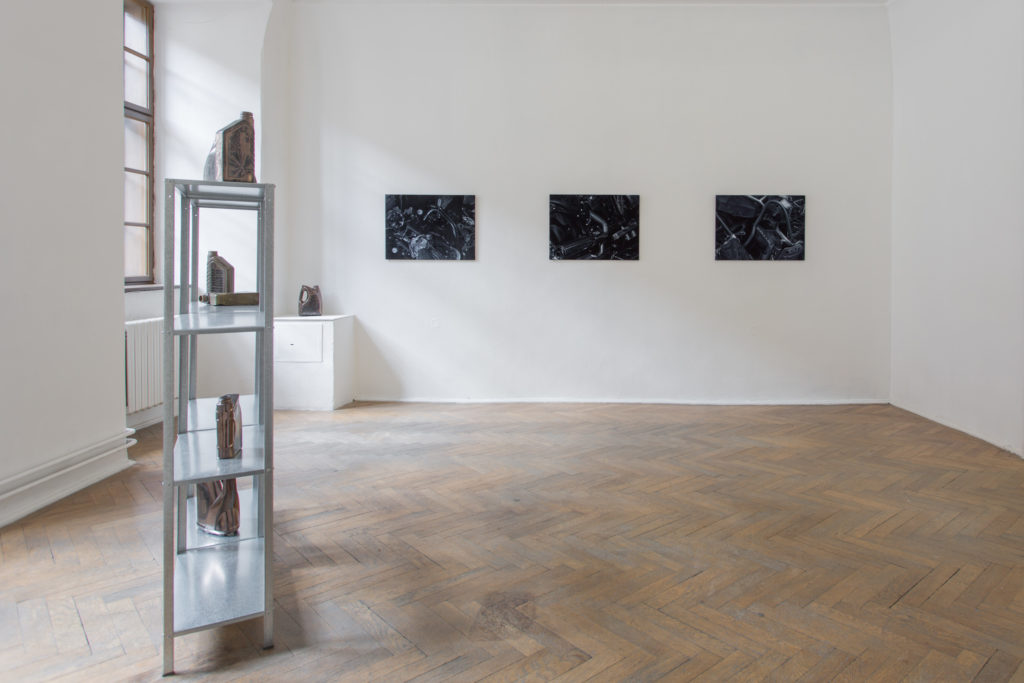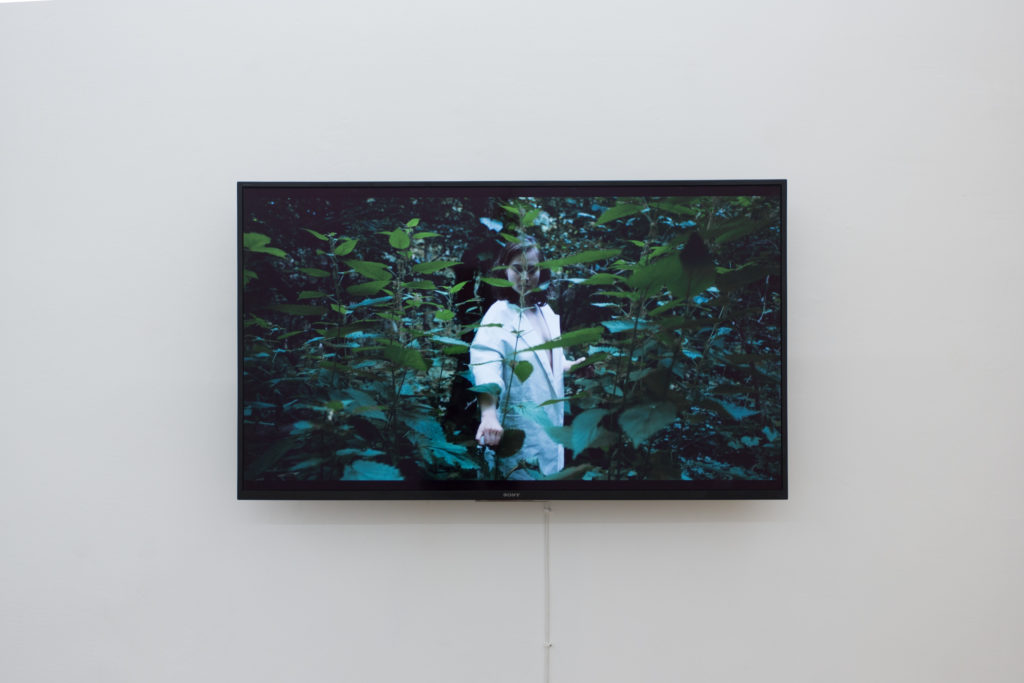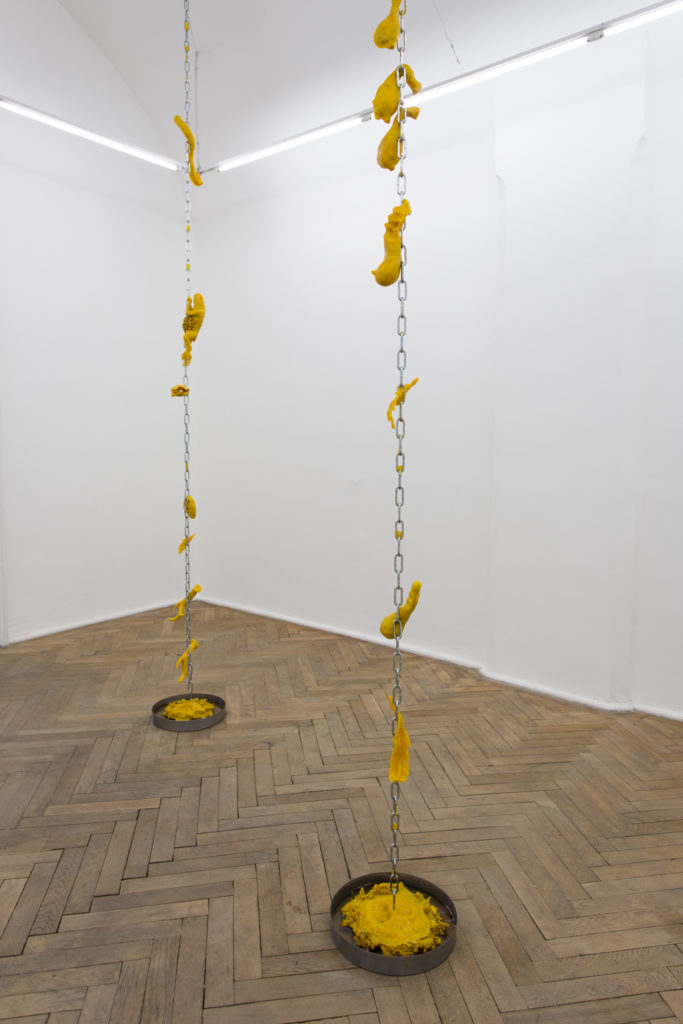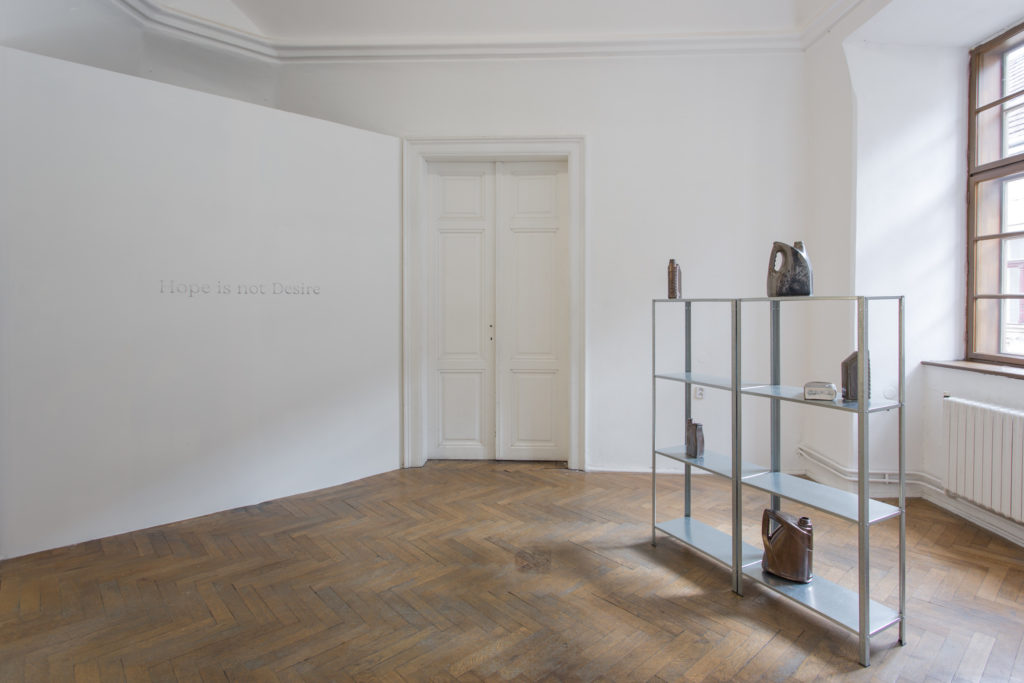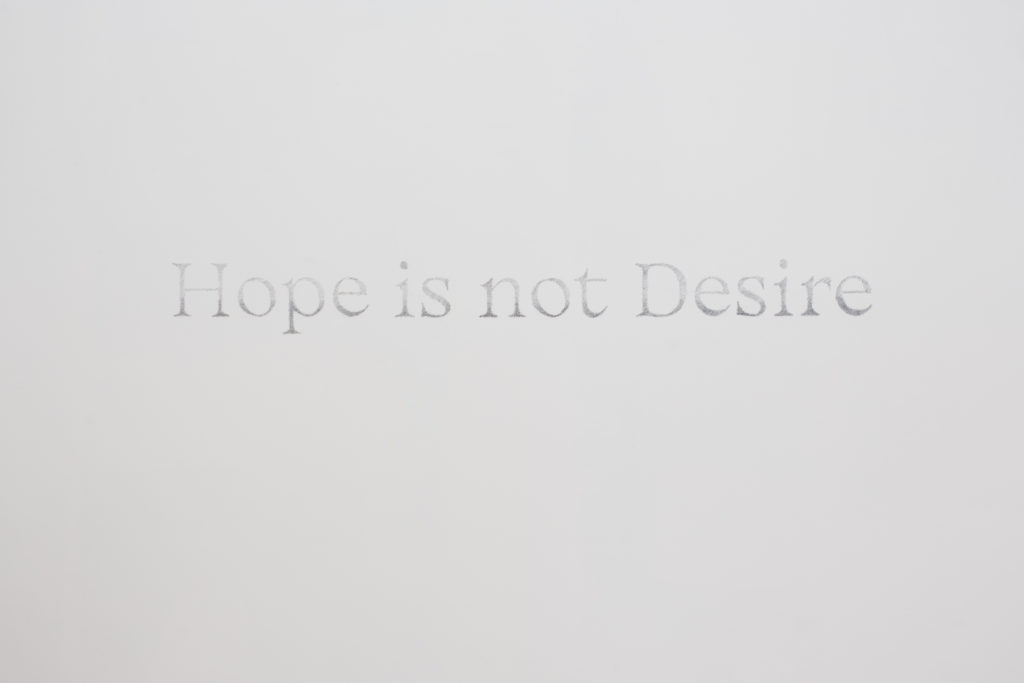Gideon Horváth, Rita Süveges, Anna Zilahi
Hope is not desire / xtro realm
Exhibition opening: 7. 7. 2022 / 19.00 hod. Exhibition's duration: 8. 7. - 27. 8. 2022
Is the dream of the survival of Earth’s ecological system a vision that we can realistically hope for, or is it just a wish we make without significant probability? Hope and desire are often interchanged, but these notions bear different meanings: desires are nurtured within us, not always in touch with reality; on the contrary, hope’s intrinsic quality is the possibility of making things better. Amidst the ongoing climate crisis, we have to revisit our visions – which of them are mere desires corrupted by the exploitative global capitalist production and which give us real alternatives about our future.
Hope is not desire presents works that are centered around three ecologically relevant notions that help us reflect upon this dilemma. Gideon Horváth’s work is informed by queer ecology, Rita Süveges explores techno-optimism, and Anna Zilahi’s work is rooted in ecofeminist thought.
The current show is the Budapest-based xtro realm artist group’s first exhibition in Slovakia, and the first occasion of Gideon Horváth, Rita Süveges, and Anna Zilahi showing works as a trio. Since 2017, the group has organized a multitude of programs (reading circles, exhibitions, field trips) focusing on new-realist and ecological theories that critique the anthropocentrism of contemporary thinking, in order to provide access to the discourses of climate change and the Anthropocene in Hungary. Xtro realm’s collaborations and network-building activities are all carried out in the spirit of knowledge-sharing and transdisciplinarity. In 2019 they edited, co-written, and published ‘Extrodæsia: Encyclopedia Towards a Post-Anthropocentric World’, a multidisciplinary bilingual (English-Hungarian) encyclopedia including ecologically themed and new realist theoretical entries, prose poems, and visual elements. In 2021, they curated the group exhibition titled ACLIM! Agency for Climate Imaginary! at the 3rd edition of the OFF-Biennale Budapest.
///
Gideon Horváth
“his wings to touch the skies”
Gideon Horváth’s installation is inspired by queer ecology, which, as Catriona Sandilands puts it is „an interdisciplinary constellation of practices that aim, in different ways, to disrupt prevailing heterosexist discursive and institutional articulations of sexuality and nature, and also to reimagine evolutionary processes, ecological interactions, and environmental politics in light of queer theory.“ We portray nature being extroverted, able-bodied, virile, aggressively healthy and heterosexual. In reality all living things on our planet are rather queer. Most of the plants are hermaphrodites, making both pollen and seeds, pollinated by the help of animals, like bees. Large part of the animals are hermaphrodites or intersexual too, it is a highly successful way of surviving for them. Even so, the master-narrative of most theories of evolution is heterosexist, centered around reproductive sexual penetration. When it comes to nonreproductive sexual behaviour, it has been linked to hierarchical systems, not in terms of pleasure but as signals of dominance and submission. Using queer symbols and the two chains reaching upwards, Gideon Horváth depicts the contradiction between the anthropocentric and heterosexist way of presenting evolution and the long neglected queer phenomenas that disrupt this doomed view. The material of beeswax is also linked to these themes, Horváth uses it because according to him it has much queer qualities: it is sensitive, it can take on many shapes to adapt but it is also highly resilient, just like oppressed queer communities.
„his wings to touch the skies”
(2022, beeswax, chain, steel plates)
www.gideonhorvath.com
Rita Süveges
Genezis – the Irrigation Can of Petroculture
Speedrace 01.,02.,03.
Rita Süveges is intrigued by the changing conception of nature; that is, how different eras relate to nature. Süveges continues her research by developing an ecofeminist critique of the techno-optimism that has been formative of life in the 21st century. In Hope is not Desire, Süveges explores two practices of excessive fossil fuel use: firstly in agriculture: through the ceramic jugs of Genezis – the Irrigation Can of Petroculture, and secondly in the case of motorbikes: through the velvet paintings of Speedrace. Süveges’ works borrow and make fun of the techno-optimism and masculine aesthetics that represent the domination of nature by patriarchal societies. The dominant worldview since the Enlightenment has suggested that the precariousness of humankind would be overcome by civilisation and continuous development. Technological innovation is the engine of this process. However, the ecological and climate catastrophe has highlighted that this is not without its problems. Development is always underpinned by the interests of certain social groups; costs, however, fall upon the entirety of society and nature. Technology can be seen as the irresponsible mismanagment and expoitation of nature and social groups by the elites of the patriarchal society. A techno-optimist approach furthermore expects the environmental catastrophe to be resolved by technology as opposed to essential social change. On the sixth day of the Creation, God called upon man to rule over living beings. This biblical path to rule the
Earth has spurred the climate catastrophe, as man has perfected the exploitation of nature. Genesis [Genezis] does not only refer to the world’s creation in the Christian tradition, but it is also the brand name of Hungary’s leading group of agricultural products, including fertilisers and insecticides. The agricultural scene came to be dominated by large conglomerates following World War II. According to a 2017 IPCC (Intergovernmental Panel on Climate Change) report, intensive agriculture, forestry, and land-use contributed to 25% of global greenhouse gases, with the fossil fuel-based industry playing a hand in glove role with large-scale agricultural production. The jugs borrow their aerodynamic forms from motor oil bottles; on these, she substitutes the usual logos for illustrations that highlight the compulsiveness of agricultural technologies. Speedrace depicts motorbikes destroyed in major traffic accidents. As the elite product of heavy industries, the petroleum-eating motorbike is also the symbol of fighting time with speed. In many cases, their total annihilation is thanks to their own attributes of overdriving power and speed. The shiny chrome parts painted with oil on velvet ironically depict the masculine romanticism of the enthusiasm for machines and motorpower. Techno-optimism is equally woven through all facets of our lives ranging from the comfort of shiny chrome motorbikes to hydroculture-produced baby spinach. This is reflected in the masculine aesthetic of the motoroil jugs that convey acceleration, mechanical power, and the aggression of impetus, exactly that of the motorbike. In Süveges’ work, jugs shift from simply being containers to emblems of a petroculture.
Genezis – the Irrigation Can of Petroculture
glazed ceramics, porcelain paint
2021
The ceramics were made with the contribution of Lakatos Ábel, ceramic artist.
Speedrace 01.,02.,03.
55×75 cm each
oil on velvet
2022
www.ritasuveges.com
Anna Zilahi
Urtica
Nettle is a multifaceted weed, becoming a part of one’s imagination already in childhood. It cannot be touched, since it stings and causes a rash. Establishing contact and connection involves instant pain. It is a plant which earned its botanical Latin name (urtica) from the burning pain it causes, even thought the list of its beneficial qualities are much more pertinent than that of its demerits. It purifies blood and its sting is anti-rheumatic. Touching a nettle bears the ambivalence of humans encountering nature: we seek to leave such vulnerability behind since the Enlightenment and, with it, all experiences that remined us of this relation. In the shadow of the ecological crisis a different approach is necessary: openness, and, the realization that pain is inherent to all sorts of relations. Getting to know the other, enriching ourselves is not possible without dissolving our boundaries. In Hans Christian Andersen’s tale, The Wild Swans, the princess saves her brothers, who have been turned into swans, by sewing them an armor shirt from nettle. It liberates them and returns their human bodies. Liberation is possible through pain, by accepting pain. The girl could not whimper, cry out or exclaim her pain while sewing. The only “tangible” result of the process is the sewn nettle cloth. The performative video piece shows the process of its creation.
Urtica
(2022, video performance, 6”21’)
Image: Gergely Ofner
Editor: Eszter Králl
www.annazilahi.com
The exhibitions of this gallery are supported using public funding by the Slovak Arts Council.
The Slovak Arts Council is the main partner of the project.
This project is supported by the Košice City.



